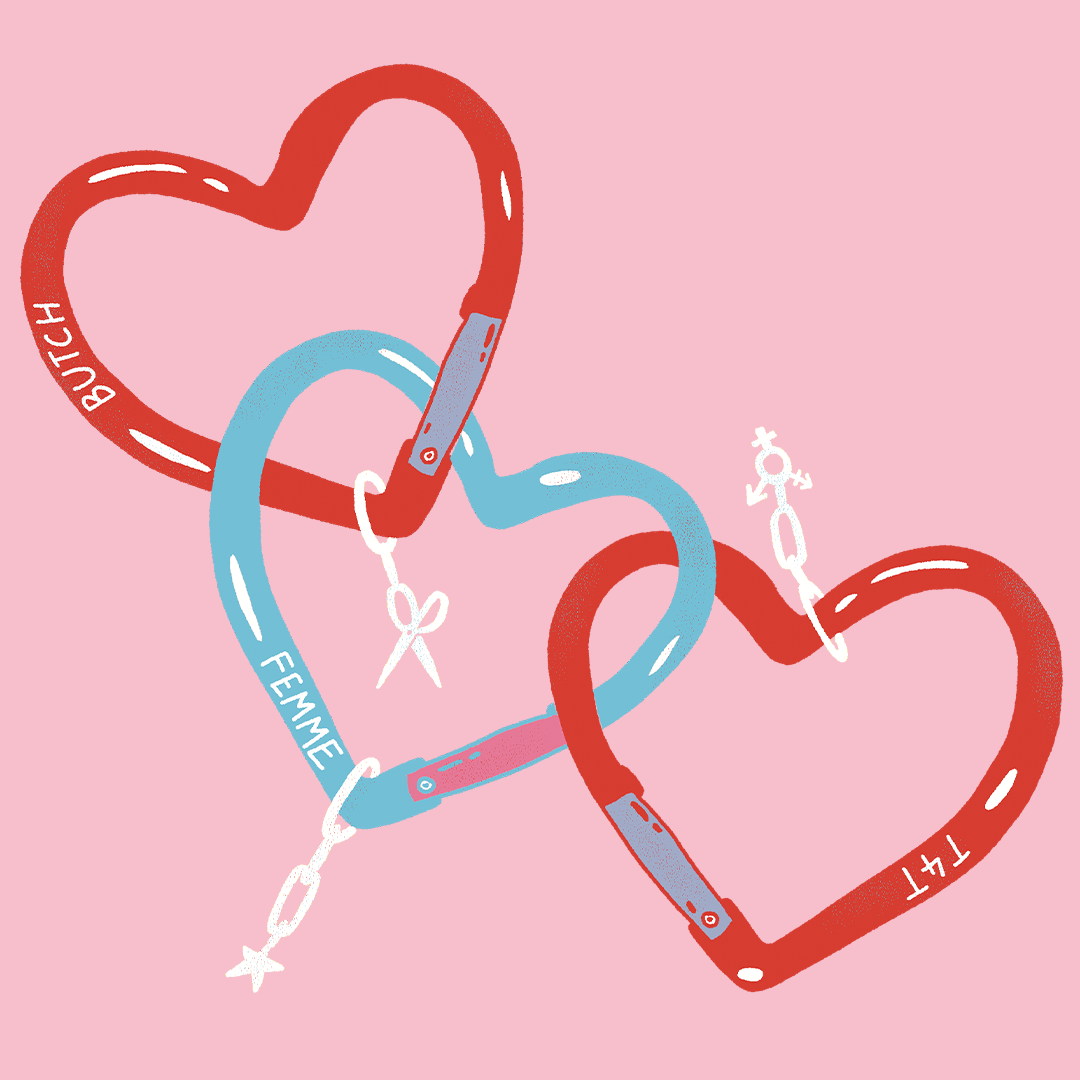Bending the Relationship Binary: How non-monogamy and queerness go hand in hand
Being queer gives us a toolbox of language, labels, and lived experience that help us to define ourselves. We use these tools to explore our desires and identities, understand who we’re drawn to, and how we want to connect. It's no secret that non-monogamy is especially common in queer communities.
When the history of monogamy is rooted in property rights and the male ownership of women, how are queer people to pertain to this relationship structure? The concept of the nuclear family is nothing innate, but something that evolved from the rise of agricultural capitalism and later enforced by Christianity.
If the structure of monogamy was built to benefit the straight, cis man, it makes sense that queer people have historically steered away from such possession-based arrangements and spaces.
At its heart, ethical non-monogamy isn’t just about how many people you can add to the roster, it’s about learning to love deeply and choosing how you show up in the relationships you have.
Non-monogamy can be defined by any relationship arrangement that involves one or more partners that are not exclusively sexual and/or romantically committed to each other. Within this umbrella term, you’ll find many different labels — ethical non-monogamy, polyamory, swinging, solo polyamory, kitchen table polyamory, hierarchical polyamory, the list goes on.
In The Non-Monogamy Playbook, Ruby Rare writes that queerness and non-monogamy are intrinsically linked. Perhaps because we’re already ‘bent’, we’re able to see around the corner. While this is not to say non-monogamy is exclusive to queer individuals, we’re used to carving our own paths, navigating where we fit in gender, sexuality, and love.
Thorn* is a trans woman, and her two primary partners are also queer, with a third who lives overseas. For her, queer and non-monogamous spaces have all been the same.
“It definitely feels like queer spaces lend themselves more to it — to the point that I feel like you go to a lot of queer spaces and you’ll find people complaining about how hard it is to find monogamous relationships at the moment.”
Non-monogamy works for her because of the “lack of inherent rules or expectations as to what a relationship should look like, how many people or what kind of people should be involved”.
Thorn hasn’t dated a cis/straight person in a long time, “I don’t particularly like dating people who are straight and cis because I’m trans and queer and it’s a lot of extra explaining to do.”
And while some of those in monogamous relationships joke that they wouldn’t have time for more than one partner — there is some truth to the scheduling aspect of it all. Thorn shares that sometimes, managing multiple partners can be a lot — at one point she found herself dating six people.
“I found myself in a thing three months ago where I was dating 6 people at once. It was not sustainable at all, and I was burning out quickly.”
Now, she says it does take coordination, “I have a shared calendar with two of my primary partners”.
She laughs, “The more people involved, the more it can get exponentially harder.”
Thorn makes a point that being careful who you date is always important — but if not more for non-monogamous relationships. “Because you’re no longer just considering how that person affects you. How your person treats you can affect multiple people within the relationship.”
She warns, “There are definitely some people who don’t go about entering polyamorous relationships healthily, and it can really affect the other people involved.”
It should go without saying that if you are engaging in sexual practices with multiple people, you should be regularly testing and having open conversations with your partners about your practices.
Joey, a queer individual, says being non-monogamous allows him to explore his gender and sexuality freely. “I think being queer makes me prone to wanting to explore different aspects of people and myself -- if I’m dating a woman, but I want to still explore the male sexual side of myself. Being poly lends itself well to this.”
With this self-exploration can come clear, strong and conscious boundaries. Deciding what your limits are, and what you’re comfortable with before embarking on a relationship is key.
According to Joey, “Expectations are often the death of relationships in non-monogamy ... For me, polyamory is learning the tools to have every relationship be exactly what the both of you want it to be. Nothing more, nothing less.”
As you might expect, jealously can rear its ugly head in non-monogamous relationships. But it seems that Joey doesn’t see it as something ugly, but rather a chance to learn compersion. Compersion is a term often used in polyamorous relationships to describe feeling happy when a partner is happy with another person. It’s the opposite of jealousy.
Joey tells me about the teething pains of his first polyamorous relationship. "Getting used to turning jealousy into compersion took getting used to. I learned to be happy that she was with other people.”
“Now, if I have another partner and they’re enjoying the company of someone else, that makes me happy,” Joey says.
This jealousy is also a chance for self-discovery, Joey says it’s about “understanding where the jealousy is coming from, whether it’s a kind of insecurity or trauma response”
Since monogamy is historically the only accepted relationship structure, its controlling germs like this can linger in queer polyamorous relationships.
Our society is built on the concept of man and wife, so trying to love freely and queerly outside of this means there will be hiccups. But through an understanding of our heteronormative socialisation and clear communication with partners, a new way of loving becomes possible.
*Name changed for anonymity.

